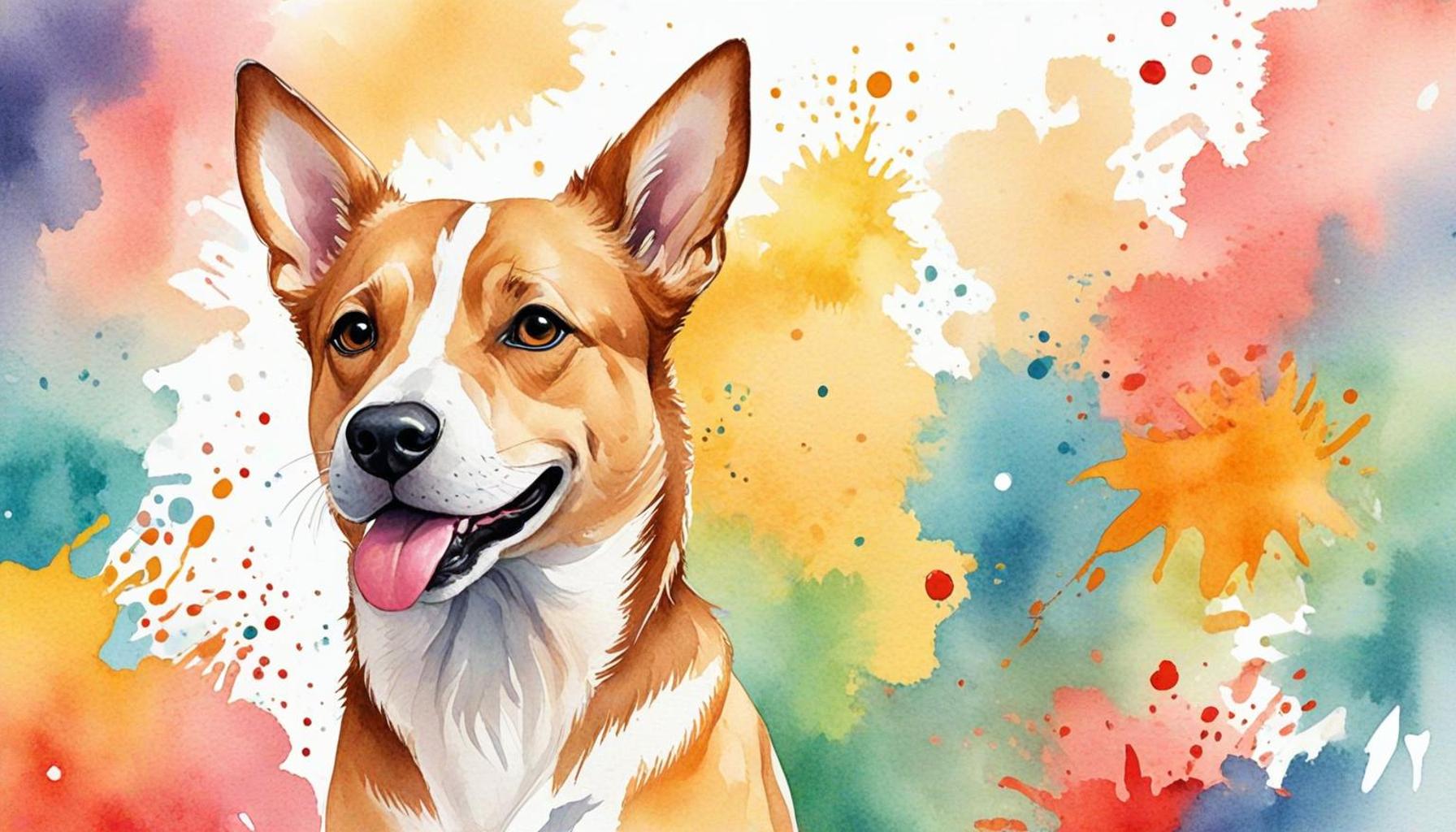Desensitization Techniques for Pets with Fears and Anxieties

Understanding Fear and Anxiety in Pets
Fear and anxiety are common experiences for many pets, and understanding these emotional responses is crucial for their well-being. Factors such as loud noises, unfamiliar individuals, or changes within the home environment can trigger stress responses in pets. For instance, in Nigeria, pets such as dogs may react fearfully during the festive periods with their associated fireworks. The consequences of fear can lead to problematic behaviors such as aggression, excessive barking, or destructive habits, impacting not just the animal’s quality of life, but also that of their human companions.
The Importance of Desensitization
One effective method for helping pets confront their fears is desensitization. This technique fosters gradual exposure to anxiety-provoking stimuli in a safe and controlled manner. Here are critical components of implementing desensitization:
- Gradual exposure: Introduce your pet to the anxiety-inducing situation in small increments. For example, if a dog is afraid of the sound of thunder, start by playing a recording of low thunder sounds at a volume they can tolerate.
- Positive reinforcement: Encourage and reward your pet for showing calm behavior when exposed to the trigger. This could involve giving them their favorite treats or verbal praise, creating positive associations with the source of fear.
- Patience is key: Every pet is unique, and some may take longer to adapt than others. It’s important to remain patient and not force them into situations that cause panic. Working at your pet’s pace can lead to more lasting results.
Common Triggers and Techniques
Recognizing common triggers is vital for effective desensitization strategies. Some prevalent examples include:
- Loud noises like thunder, gunshots, or fireworks which can send many pets into a state of panic.
- Separation anxiety, often seen when pets are left alone, causing them to bark incessantly or engage in destructive behaviors.
- Strangers or unfamiliar animals that induce fear, leading to aggressive or defensive actions.
Each situation requires tailored desensitization techniques. For sound-related fears, utilizing sound therapy can be beneficial. This approach might involve playing calming music or sounds that mimic soothing environments. On the other hand, employing crate training can significantly assist pets with separation anxiety; it provides them with a safe space that they can retreat to when feeling anxious.
By effectively implementing desensitization techniques, pet owners can foster a calm and confident demeanor in their furry friends. As you explore these strategies further, you’ll not only discover new methods for alleviating fear and anxiety in pets but also enhance the bond you share with them, creating a more harmonious home environment.
LEARN MORE: This related article may interest you
Identifying Specific Fears in Pets
Before embarking on the journey of desensitization, it is vital to identify specific fears in your pet. Each animal has unique triggers, and recognizing these will help you tailor your approach effectively. Common triggers can vary widely from one pet to another. For example, a dog may exhibit fear of loud noises such as sudden thunder or celebratory fireworks, while another may feel anxious around new visitors or unfamiliar environments.
To accurately pinpoint your pet’s fears, observe their behavior closely. Signs of anxiety can include:
- Hiding: If your pet seeks refuge under furniture or in tight spaces, it may be an indicator of fear.
- Excessive barking or whining: Vocalizations can signal distress when faced with a triggering situation.
- Avoidance behaviors: If your pet consistently steers clear of a particular person, place, or noise, this is a telltale sign of apprehension.
Understanding these signs is the first step in helping your pet regain a sense of security. For instance, in many Nigerian households, pets can become agitated during festive periods due to the frequent use of firecrackers and fireworks. A dog that cowers in response to these noises may require specific strategies to lessen its fear.
Establishing a Safe Environment
Another crucial aspect of managing your pet’s fears involves creating a safe environment. This space should be a sanctuary where your pet can retreat when feeling stressed. Consider utilizing soft bedding, familiar toys, and a quiet setting away from bustling household activities. In addition to physical comfort, incorporating soothing sounds, such as calming music or white noise, can help alleviate anxiety.
Your dog’s safe space can also be enhanced with the use of aromatherapy. Certain scents, like lavender, have calming effects that can help reduce anxiety levels in pets. However, it is important to ensure that any essential oils are pet-friendly and used in moderation to avoid adverse effects.
Moreover, engaging in regular exercise and routine activities can contribute to maintaining your pet’s overall well-being. Physical activity helps to release pent-up energy, which can often exacerbate fears and anxieties. Whether it’s taking your dog on daily walks in the neighborhood or providing short play sessions with interactive toys, these actions foster a more relaxed demeanor.
As you consider the unique needs of your pet, implementing desensitization techniques becomes a personalized approach. By creating an optimal environment and identifying specific fears, you will take significant steps toward transforming anxious behaviors into a calmer, more confident pet. Stay tuned as we delve deeper into actionable techniques that can significantly benefit your furry friends.
| Technique | Key Features |
|---|---|
| Gradual Exposure | This technique involves slowly introducing the pet to the fear trigger in controlled settings. |
| Counter-Conditioning | Uses positive reinforcement to change emotional responses to triggers, making them associate fear with something enjoyable. |
| Desensitization | Involves exposing pets to their fears at a very low level, gradually increasing exposure as they become more comfortable. |
| Relaxation Techniques | Focuses on teaching pets to relax through controlled breathing and calm environments, reducing anxiety during exposure. |
Understanding desensitization techniques is essential for pet owners hoping to alleviate their furry companions’ fears and anxieties. Each method offers unique benefits tailored to cater to various situations and temperaments. Gradual exposure allows pets to familiarize themselves with their specific fears through small, controlled encounters, while counter-conditioning transforms their negative reactions into a more positive experience. Meanwhile, desensitization focuses on careful exposure to lessen fear responses over time.Implementing relaxation techniques can significantly help pets manage stress, creating a safer, more comfortable approach to dealing with anxiety-inducing situations. By exploring these methods, pet owners can empower their animals to cope with their fears and lead happier, more calm lives.
YOU MAY ALSO LIKE: Read read another article
Effective Desensitization Techniques for Pets
Once you have established a safe environment and identified your pet’s specific fears, the next step is to implement effective desensitization techniques. This process involves gradually exposing your pet to their triggers in a controlled manner, allowing them to become less sensitive over time. It’s essential to approach desensitization with patience and consistency to see meaningful results.
A pivotal technique in this process is known as counter-conditioning. This method revolves around changing your pet’s emotional response to their fear triggers. For example, if your dog is afraid of loud noises, such as fireworks, you can start by playing recordings of these sounds at a very low volume while associating the experience with something positive, like treats or playtime. Gradually increase the volume as your pet becomes more comfortable. The key here is to ensure that your pet does not exhibit signs of distress—always move at a pace that suits their comfort level.
Utilizing desensitization sessions in tandem with counter-conditioning can further enhance the process. For instance, if your puppy is fearful of meeting new people, arrange controlled introductions with familiar friends or family members who can offer gentle encouragement. Begin with the new person at a distance where your dog feels safe and slowly have them move closer as your pet’s confidence grows. It’s crucial to end these sessions on a positive note, rewarding your pet with praise and treats for their bravery.
Consistency and Routine
Consistency plays an indispensable role in desensitization. Set aside dedicated time each day to work on your pet’s fears. Allocate a few minutes every day to practice the desensitization techniques without overwhelming your pet. Remember, short and frequent sessions often yield more productive results than longer, less frequent ones.
In Nigeria, associated cultural practices—such as large family gatherings—may pose additional challenges for pets with anxieties. As festivities bring unfamiliar faces and noises, maintain your pet’s routine amidst these changes. Stick to feeding schedules and regular exercise times to foster a sense of normalcy, which can be grounding for a fearful animal.
Incorporating Professional Guidance
In cases where your pet’s fears are deeply ingrained or severe, seeking help from a certified animal behaviorist or a veterinarian specializing in animal psychology can be invaluable. These professionals can provide tailored desensitization strategies based on your pet’s individual needs, ensuring you pursue a safe and effective pathway towards improvement. In Nigeria, professionals trained in animal behavior can often provide local insights into effective handling techniques and adaptations suitable for cultural circumstances.
Also, it may be beneficial to explore behavior modification products such as anxiety wraps, pheromone diffusers, or calming supplements. These can act as additional tools to support your pet during desensitization. A combination of several methods tailored to your pet’s unique needs will likely lead to better outcomes.
Desensitization is a collaborative effort between you and your pet. While it may require time and persistence, the benefits of a calmer, more confident companion are well worth the investment. Each small progress your pet makes in overcoming their fears is a step toward a more joyful coexistence.
RECOMMENDED: Check out this similar article
Conclusion: The Path to a Calmer Companion
In conclusion, addressing fear and anxiety in pets through desensitization techniques is a highly rewarding journey that requires commitment and understanding. By implementing methods such as counter-conditioning and controlled exposure to fear triggers, you create a more supportive environment that allows your pet to gradually acclimate to their fears. Throughout this process, remember that consistency and routine are your greatest allies, especially in a dynamic setting like Nigeria, where cultural festivities can introduce additional stressors.
The incorporation of professional guidance and helpful products can enhance the effectiveness of your desensitization strategies. Certified animal behaviorists and specialized veterinarians can offer tailored guidance based on your pet’s specific challenges, ensuring a comprehensive approach that leads to meaningful improvements. Additionally, utilizing tools such as calming wraps or pheromone diffusers can bolster your efforts, making your pet feel more secure during this transformative process.
As you navigate the complexities of your pet’s fears, celebrate each small victory, recognizing that progress takes time. A calmer, more confident pet not only enhances your shared bond but also contributes to a harmonious home environment. Investing time in understanding and alleviating your pet’s anxieties is not merely a responsibility—it’s an opportunity to cultivate a deeper, more fulfilling companionship. As you embark on this journey, stay patient, observant, and committed, remembering that each step forward is a significant achievement toward a more peaceful coexistence.


